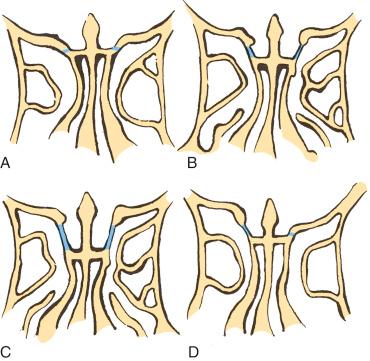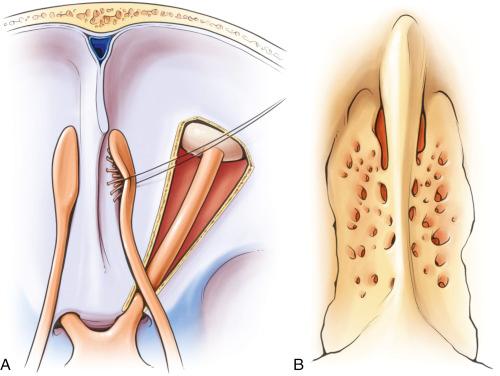Physical Address
304 North Cardinal St.
Dorchester Center, MA 02124
Cerebrospinal fluid (CSF) rhinorrhea originating near the cribriform plate results from the breakdown of barriers separating the subarachnoid space and the paranasal sinuses. This may result from traumatic, iatrogenic, neoplastic, congenital, and inflammatory processes.
A CSF leak in the cribriform region may also be spontaneous in nature and may present with a meningoencephalocele, which is the herniation of the anterior cranial fossa soft tissue through the skull base.
Although conservative management may be used to treat cribriform CSF leaks after blunt force trauma, surgical intervention is generally required for closure of other forms to prevent serious complications, including meningitis and abscess formation.
Open intracranial approaches for CSF leak repair involving frontal craniotomy, first described by Dandy in the 1920s, were limited by significant morbidity, including anosmia, intracerebral hemorrhage, frontal lobe deficits, extended hospital stay, and higher recurrence rates.
The endoscopic approach for repair of cribriform CSF leaks occurring during endoscopic ethmoidectomy was first described by Wigand and Stankiewicz in the 1980s and further detailed by many others.
Today, transnasal endoscopic approaches for repair of cribriform CSF leaks and encephaloceles are the mainstay of surgical therapy, with success rates as high as 98%, low complication and recurrence rates, and decreased morbidity.
The ethmoid labyrinth forms the bulk of the anterior skull base, with the cribriform plate being the lowest portion of the anterior skull base in the midline. The cribriform plate is suspended bilaterally by the lateral cribriform lamellae, which thicken as they extend laterally into the fovea ethmoidalis. Therefore, when performing an ethmoid skull base dissection, the surgeon is, in fact, operating above the lowest level of the anterior cranial fossa.
The depth of the cribriform plate is dictated by the length of the lateral cribriform lamellae, as classified by Keros ( Fig. 26.1 ):
Keros type 1: The cribriform plate is located 1 to 3 mm below the roof of the ethmoid, resulting in a short lateral cribriform lamella.
Keros type 2: The cribriform plate is located 4 to 7 mm below the roof of the ethmoid.
Keros type 3: The cribriform plate is located 8 to 16 mm below the roof of the ethmoid, resulting in a long vertical lamella.

The cribriform plate is perforated by numerous olfactory fibers ( Fig. 26.2 ). Despite these perforations, the cribriform plate itself is fairly thick.

The anterior ethmoidal artery originates from the ophthalmic artery and passes through the anterior ethmoidal foramen near the frontoethmoidal suture. Its bony canal may be partially or completely dehiscent in 40% of cases. The artery crosses the skull base until it gives rise to meningeal branches at the cribriform plate.
Preoperative intrathecal injection of fluorescein is frequently used to localize the source of CSF leakage. Although neurologic complications—including seizures, headaches, and cranial nerve deficits—have been reported, a concentration of 0.1 mL of 10% fluorescein mixed with 10 mL of CSF injected slowly has been shown to be of low risk.
The utility of lumbar drainage in the early management of cribriform CSF leak repair is controversial. When used, they can be conduits for fluorescein administration and are deployed to divert CSF for 2 to 5 days.
The routine use of perioperative prophylactic antibiotics in patients undergoing cribriform CSF leak repairs is also controversial, albeit reasonable.
Become a Clinical Tree membership for Full access and enjoy Unlimited articles
If you are a member. Log in here